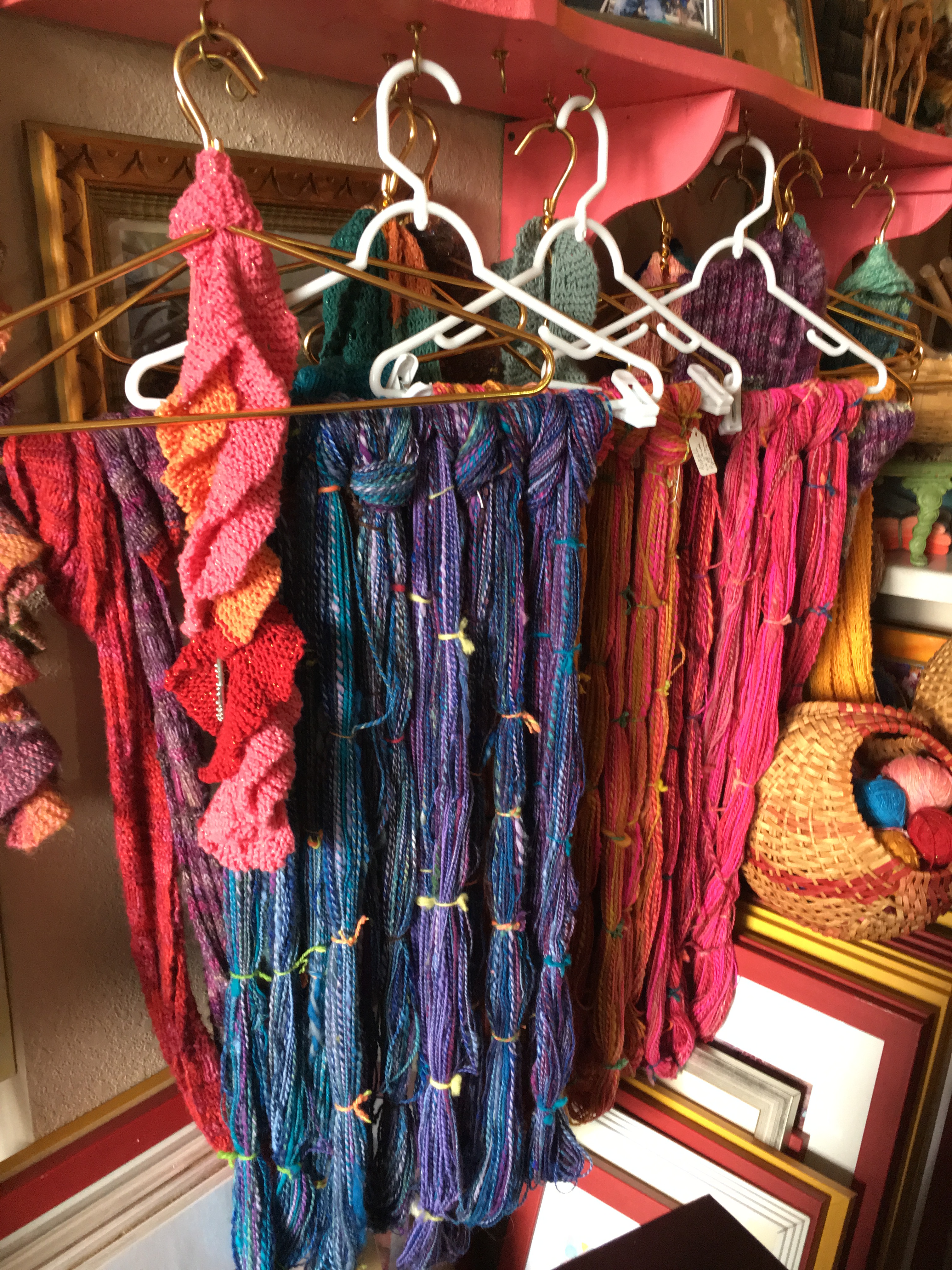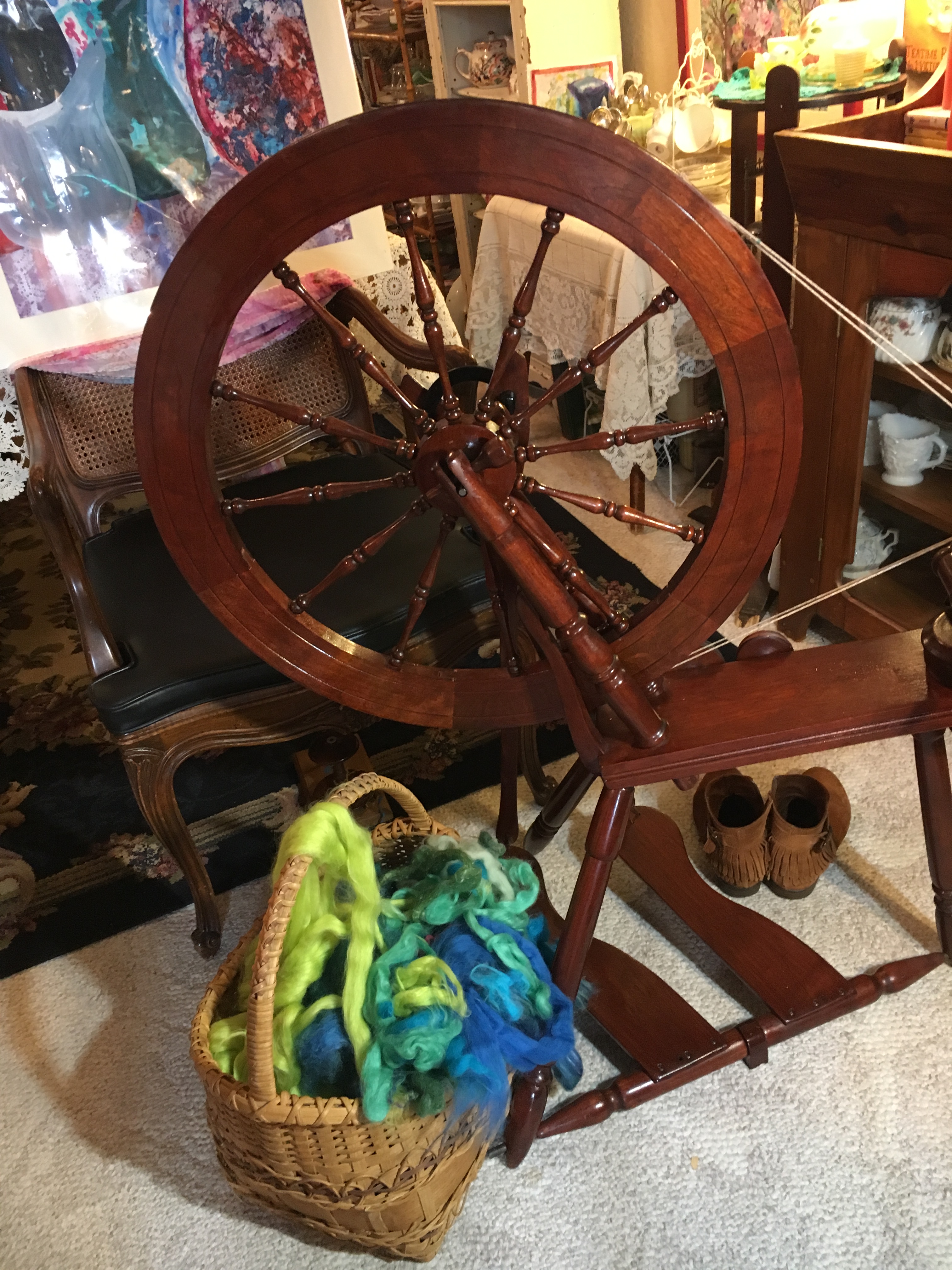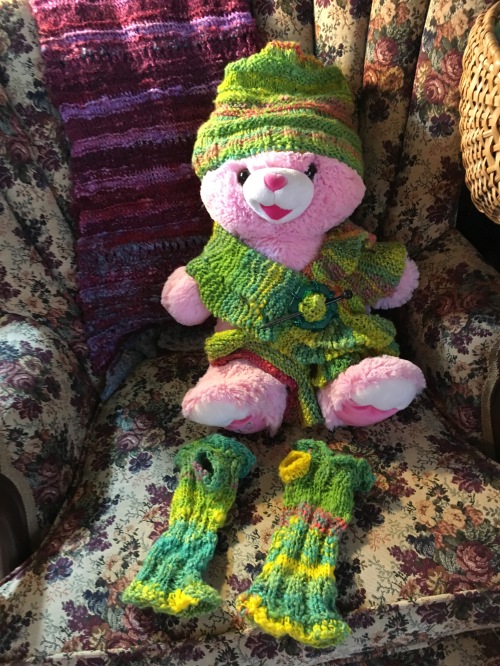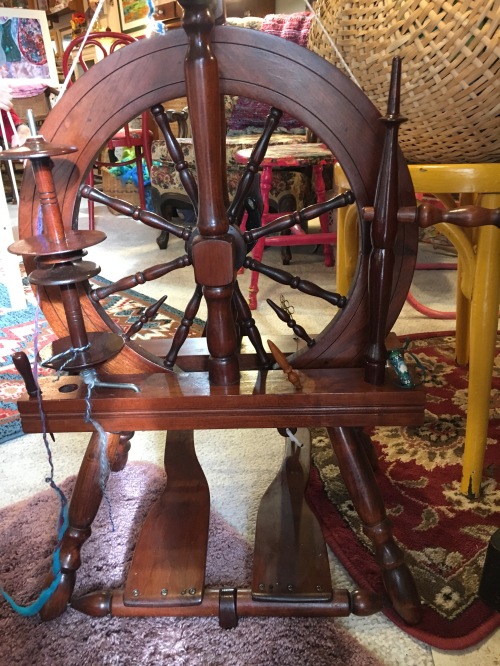. . . of my art coin: FIBERS! I love fibers more than I can express—and definitely as much as I love my brushes and paint tubes. Here are some of my handspun yarns—fresh from my two beautiful JENSEN WHEELS made right here in Wisconsin.

I love to wear hats, scarves, vests, leg warmers, and wrist warmers which I have knitted with my handspun yarns—lately a combination of Merino and Corriedale wools, and Tussah silk*. Everywhere I go, people (strangers!) comment on my creations—I think because of the stunning colors I blend on my spinning wheels, not because of my knitting prowess which is intermediate and not striking in today’s world of over the top fantastic knitters.
So they comment—things like, “Oh, I LOVE that scarf” or whatever. Then I mention that I made it from my handspun yarn, and 1) Eyes glaze over and 2) The person’s face goes blank and the conversation ends. Many folks out there just don’t get it!
Here is my large, Saxony style wheel. The JENSEN WHEELS come in several sizes and two basically different styles—Saxony and Irish Castle, but the mechanisms are the same; the bobbins are interchangeable, and all of the gorgeous wheels are made from cherry wood—that warm, antique-y looking Prince of Hardwoods.
The fibers you see in the basket (which was crafted by my incredibly talented daughter-in-law, Cheri Been) are Tussah silk and Merino (the chartreuse from LIVING DREAMS via AMAZON PRIME) and Corriedale (the bright blue from THE WOOLERY’s online store; the lighter blue is also Tussah Silk and Merino from LIVING DREAMS.

Actually what the folks with the glazed over eyes don’t realize is that we fiber people are a formidably ubiquitous sub-culture comprising a stubborn slow-lane backlash to fast-lane Corporate America. All over the USA, one may find huge gatherings of fiber people (woolly characters that we are) where vendors sell their fleeces from their fleeced flock of really woolly characters—those allegedly stupid critters called “sheep” to whom we humans are compared in God’s Word, the Holy Bible.**
Also at these Fiber Fairs are yarn vendors and sellers of fiber dyes, spinning and knitting paraphernalia (I’d have to start a fiber blog because it would take forever just to list and explain the odds and ends in my home, pertaining to spinning and knitting).
Most Fiber Fairs will include food consisting of lamb as the main attraction (why don’t more people realize that lamb is the most yummy of meats?), workshops in many aspects of spinning and knitting (again, an ongoing blog would only begin to cover those aspects), pens with ewes and their adorable long-legged babies, classes on critter care—often including the raising of other fiber source animals such as llamas, alpacas, Angora goats for mohair, etc. (I have spun a lot of dog hair combed from my decades of beloved collies).
Here are a few more shots from the fiber studio in our living room. My painting studio is in our bedroom; obviously I have a beautifully tolerant and accepting husband, but don’t feel sorry for him; he has an entire room all his very own, for his computer and a Lazy Boy chair for watching his sports. (I join him in there, to watch THE FIVE, SPECIAL REPORT, and THE ANTIQUES ROAD SHOW).
The model in the first pic below is Pinkie. I believe Pinkie appeared on this site a couple of years ago—anyway that’s what she remembers and she has been begging me to go public again because she loves wearing and displaying my creations. The things at Pinkie’s feet are wristlets (fingerless gloves). I couldn’t quite manage getting them on the model’s hands. Maybe feet?
Next, my other JENSEN WHEEL—the Irish Castle Wheel style. This one travels well. When we lived up north in the wild woods, I used to secure the Castle Wheel in a seat belt next to the driver’s seat in our van, and drive from 15 to 30 miles to attend a monthly spinner’s afternoon of refreshments, chat, and sometimes even some spinning.
Finally, more yarn. Fibers forever! I began my woolly life in 1980 and raised a small flock of very silly sheep for 18 years, on 3 acres in a country subdivision. Some neighbors got weirdly uptight about my sheep, It was a neighborhood of HORSE PEOPLE, and HORSE PEOPLE are a bit more trendy and upscale than SHEEP PEOPLE, But we managed. We simply moved the sheep to our backyard with our chickens and geese. Then the neighbors couldn’t see them, although they could still hear them.



*Tussah is wild silk, gleaned from silk worms who munch and lunch on wild plants—as opposed to Bombyx silk cultivated in the controlled environment of a silk farm and fed only mulberry leaves.
**All we like sheep have gone astray”—true, but there is an ANSWER: our RISEN SAVIOR, The LORD JESUS CHRIST. It’s almost Resurrection Day, so I just had to get that in. 🙂
Margaret L. Been — March 24, 2018


